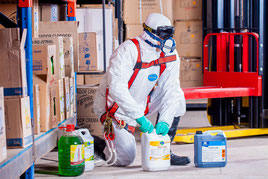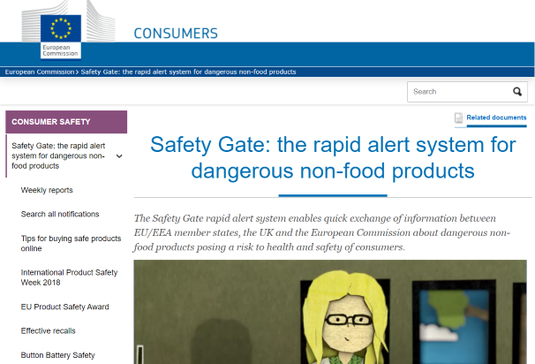One way or another, we are regularly exposed to substances. Unfortunately, some of them are considered dangerous to our health and the environment. Let’s find out some of the main hazardous chemicals around us.
The periodic table classifies 33 heavy metal elements. Heavy metals serve in many applications. For example, we can find them in electronics, batteries, and even packaging! Nevertheless, some heavy metals are well-known for being hazardous.
Therefore, regulations strive to control their use. Examples are:

Lead and lead compounds serve in many applications, from glass products to batteries and electronic equipment. Additionally, lead may be present in aluminum, steel, and copper alloys with brass.
Despite practical benefits, lead may lead to:
Interestingly, historians reveal that lead poisoning was known by our ancestors millennia ago.

This heavy metal can be present in
Mercury is also known for its tragic effects on the nervous, digestive, and immune systems.
Sadly, the Minamata disease exemplifies the symptoms of methylmercury exposure through fish, seafood, and water. As portrayed in the movie Minamata with Johnny Depp, the release of mercury in water has traumatized an entire community for generations.

Similar to lead and mercury, cadmium is an ingredient in several batteries. On top of being present in nickel-cadmium rechargeable batteries, cadmium applications include:
Regrettably, cadmium exposure can be carcinogenic. In addition, cadmium can affect bones, kidneys, and lungs.

Nickel resists corrosion and tolerates high temperatures. Because of these properties, nickel is a precious ingredient in metal alloys, like stainless steel. Nevertheless, nickel’s drawbacks to health are:
Consequently, the EU REACH Annex XVII restricts nickel and compounds in articles intended to direct and prolonged contact with the skin, such as jewelry, handles, or buttons.

Hexavalent chromium is the 6+ oxidation state of chromium.
Like nickel, hexavalent chromium is irritant. On top of being a carcinogen, hexavalent chromium is toxic to:
Despite these hazards, industrial applications like electroplating still use hexavalent chromium or its compounds.
Heavy metals are not the only hazardous chemicals you can find in everyday products. Here is another group of chemicals called phthalates.
Phthalates (pronounced without PH) are present in so many applications that we call them everywhere chemicals. Indeed, they are plasticizers additives of plastics, such as vinyl and polyvinyl chloride (PVC).
Therefore, you can have them in:

Since various phthalates are restricted, let’s focus on the most prevalent one: DEHP.
DEHP is the acronym for Di(2-ethylhexyl)phthalate. Because DEHP can be carcinogenic and reprotoxic, various laws regulate its use. For example, these regulations are:

The long name of PFAS is perfluoroalkyl and polyfluoroalkyl substances. PFAS are present in multiple products like:
It is because of their waterproof, anti-corrosion, and resistant properties.
It is also why we call PFAS forever chemicals. Unfortunately, these halogenated molecules are persistent, bioaccumulative, and can be toxic.
Scientists suspect PFAS of having reproductive and developmental adverse effects. For example, PFAS may increase the risks of high cholesterol levels or obesity. They may also cause some cancers.
Therefore, by contaminating waters, soil, and organisms, PFAS bring public health concerns. Furthermore, we all have a certain level of PFAS in our blood!
Hence the rise of legislation for some PFAS, like PFOA and PFOS. Indeed, these chemicals are increasingly regulated, especially in North America and Europe, under:

Finally, various US states and cities have also launched restrictions on some PFAS, especially in firefighting foam.
Look at the articles and chemicals around you. You may find information about different hazardous substances they may contain.
Safe storage and handling details should come with paints, solvents, and other mixtures.


Employers must provide and maintain Safety Data Sheets (SDS) next to chemicals at the workplace.
Especially, section 3 of harmonized SDS lists the names of hazardous chemicals.

You have certainly seen these symbols on chemicals’ packaging.
The Globally Harmonized System of Classification and Labeling of Chemicals (GHS) gives the details and meaning of these pictograms.
Databases
Several public databases enable us to determine whether a product contains restricted chemicals. For example, here are three databases:

Labeling
The information about hazardous chemicals also appears on some article labels. For instance, it is an obligation under the California Proposition 65.
Any experience or questions about hazardous chemicals in your products? Let us know and ask an Enviropass expert!